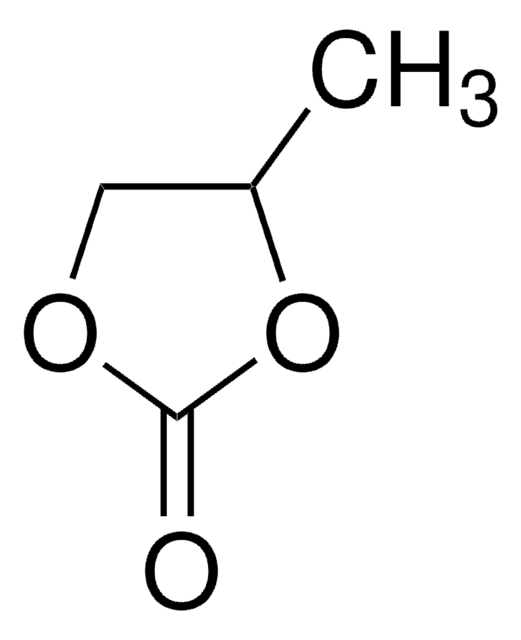8.02933
Diethylene glycol dibutyl ether
for synthesis
Synonyme(s) :
Diethylene glycol dibutyl ether
About This Item
Produits recommandés
Pression de vapeur
0.01 hPa ( 20 °C)
Niveau de qualité
Pureté
≥98.0% (GC)
Forme
liquid
Température d'inflammation spontanée
268 °C
Puissance
3900 mg/kg LD50, oral (Rat)
3555 mg/kg LD50, skin (Rabbit)
Point d'ébullition
254 °C/1013 hPa
Pf
-60 °C
Température de transition
flash point 118 °C
Solubilité
3 g/L
Densité
0.88 g/cm3 at 20 °C
Température de stockage
2-30°C
InChI
1S/C12H26O3/c1-3-5-7-13-9-11-15-12-10-14-8-6-4-2/h3-12H2,1-2H3
Clé InChI
KZVBBTZJMSWGTK-UHFFFAOYSA-N
Application
- Transport and Association of Ions in Lithium Battery Electrolytes Based on Glycol Ether Mixed with Halogen-Free Orthoborate Ionic Liquid: This study explores the solvent properties of glycol ethers, including diethylene glycol dibutyl ether, in enhancing the performance of lithium battery electrolytes. The findings suggest that these solvents facilitate superior ionic mobility, potentially improving battery efficiency and safety (Shah FU, et al., 2017).
- Glymes as new solvents for lipase activation and biodiesel preparation: Diethylene glycol dibutyl ether is highlighted as an effective solvent for lipase activation, which is crucial in biodiesel production. This application demonstrates the solvent′s potential in biofuel technologies, enhancing enzyme activity and stability (Tang S, et al., 2013).
- Extraction and carrier-facilitated transport of amino acids using synthetic non-cyclic receptors through bulk liquid membrane: This research indicates the utility of diethylene glycol dibutyl ether in the selective transport and extraction of amino acids across synthetic membranes, offering insights into its applications in biotechnological and pharmaceutical industries (Joshi P, et al., 2006).
Remarque sur l'analyse
Density (d 20 °C/ 4 °C): 0.882 - 0.884
Peroxide (as H₂O₂): ≤ 0.005 %
Identity (IR): passes test
Code de la classe de stockage
10 - Combustible liquids
Classe de danger pour l'eau (WGK)
WGK 1
Point d'éclair (°F)
244.4 °F - closed cup
Point d'éclair (°C)
118 °C - closed cup
Certificats d'analyse (COA)
Recherchez un Certificats d'analyse (COA) en saisissant le numéro de lot du produit. Les numéros de lot figurent sur l'étiquette du produit après les mots "Lot" ou "Batch".
Déjà en possession de ce produit ?
Retrouvez la documentation relative aux produits que vous avez récemment achetés dans la Bibliothèque de documents.
Notre équipe de scientifiques dispose d'une expérience dans tous les secteurs de la recherche, notamment en sciences de la vie, science des matériaux, synthèse chimique, chromatographie, analyse et dans de nombreux autres domaines..
Contacter notre Service technique